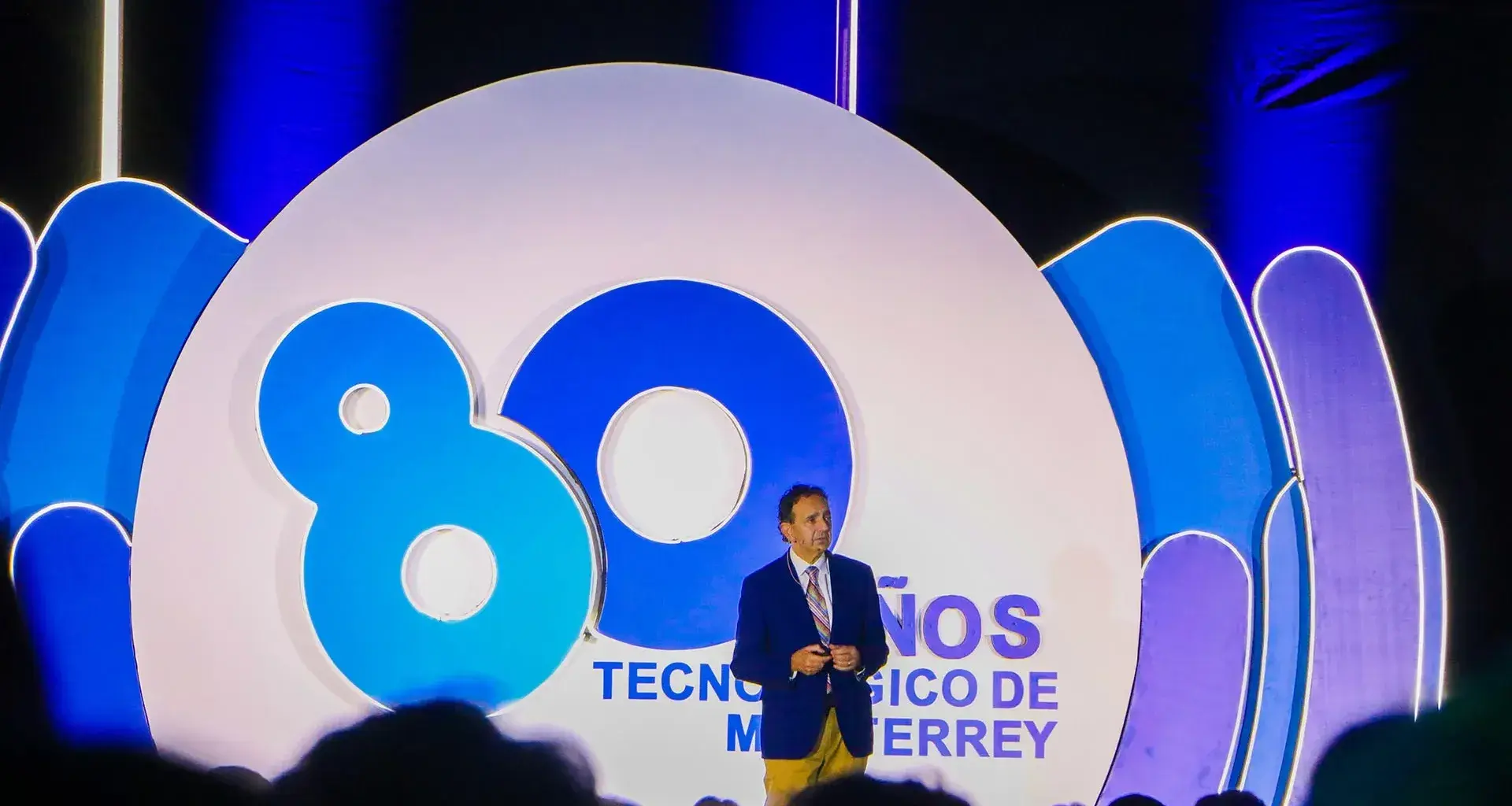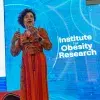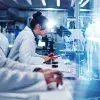“Every 30 seconds, one patient around the world dies from diseases that could have been treated with tissue replacement. Wouldn’t it be great if we could regenerate ourselves? Is that possible?” asked Anthony Atala, a bioengineer at the Wake Forest Institute for Regenerative Medicine (WFIRM).
The researcher from Wake Forest University in North Carolina, United States, declared that part of the future of health is regenerative medicine because it has the potential to save so many lives.
Anthony Atala participated in the series of talks called Inspire to Transform as part of Tec de Monterrey’s 80th anniversary celebration. This time, the talk was at the Tec’s Guadalajara campus to address the subject of regenerative medicine: cells, tissues, and growing organs.
The physician and bioengineer said that the aim of regenerative medicine is to research and develop 3D-printed human tissues and organs (three-dimensional printing of layers in a machine with different materials) so that it will be possible in future to transplant them as required.
“In reality, we’re constantly regenerating ourselves; our cells, bones, and brains. The problem is that we don’t regenerate when we’re sick or injured. And that’s where regenerative medicine comes in,” said the researcher.
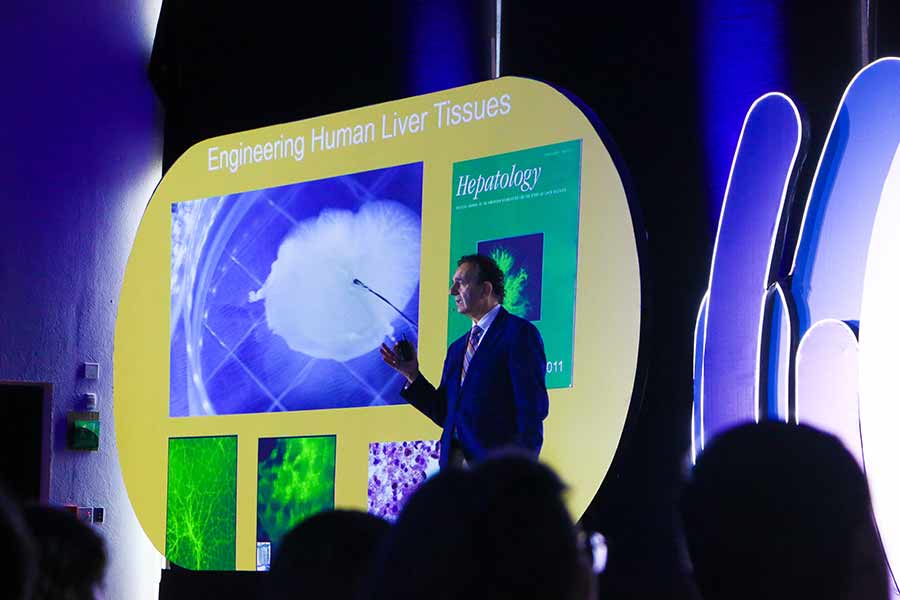
Innovating in medical science
Atala came up with the idea of using 3D printers to print living cells 20 years ago, while analyzing ways to advance regenerative medicine. His innovations in generating organs have revolutionized medical science today.
“Regenerative medicine has the potential to completely alter the medical field as well as patients’ lives, with the development of new treatments for diseases that were previously considered incurable.
“We still have a lot to learn and develop in this area, so let’s keep working to improve the lives of more people,” the scientist said.
He explained that they started with printers made specifically to generate cells, as that was what they needed. But tissues and organs can now be replicated, thanks to the accuracy of the 3D printer.
He also explained that the Integrated Tissue-Organ Printing System (ITOP) prints a material in which human cells are kept alive in a gel which also maintains their structure.

Multiple materials and strategies
Dr. Atala pointed out that, although this research is still in development, regenerative medicine could revolutionize transplantation and offer solutions to the shortage of organs.
“We can use cells from the patient, stem cell populations, or those that can become other types of cells.
“Another alternative is the use of biomaterials. Something exciting is that we have a family of about 60 materials to combine and generate the necessary tissue,” he said.
He also pointed out that if you want to create a blood vessel, you use soft materials that can be folded; if you want to create a bone or a solid piece of tissue, you use hard materials.
“All these materials share the same qualities; they’re biodegradable, disintegrate, and are healthy for humans. They are absorbed, just like stitches in surgery,” he said.

Regenerative medicine to generate organs
Atala talked about the time he participated in NASA’s Vascular Tissue Challenge, a competition to grow thick, vascularized human organ tissue in an in vitro environment to benefit medicine on long-duration missions and on Earth.
He revealed how challenging it was to follow NASA’s requirement to keep the tissue alive for more than a month. Thanks to the work they had done for 14 years on the 3D printers, his two teams were the only ones to make it to the finals.
According to Atala, kidney transplants are the most common, at 87% of cases. That’s why he is working with his research team to discover how to generate the solid organs that patients require.
They are focused specifically on projects for generating biodegradable structures to produce bones, muscles, and cartilage, and ultimately print a kidney using 3D-printing technology.
“We have a family of about 60 materials to combine and generate the necessary tissue.” - Anthony Atala
More streamlined medical tests
The bioengineer explained that (modified) 3D printers to generate tissues and organs with the necessary structural integrity have five characteristics:
- They have very small nozzles (up to 2 microns).
- They must allow the cells to be placed precisely where required (the process can be reproduced over and over again).
- They must have connections for passing liquid to maintain structural integrity.
- They must have microchannels in order to allow the liquid to reach the center of the printed tissue.
- They use 3D imaging systems, with proprietary software, to download and print structures.
According to Atala, another benefit of regenerative medicine is that it will have a significant impact on the time required to test a drug in its different phases and for it to be authorized for the market.
As an example, he talked about the multiple drugs that took 15 to 20 years to be approved in order to study their possible side effects. Thanks to 3D-printed organs, it would be possible to simulate the tests and have the results in a much shorter time period.
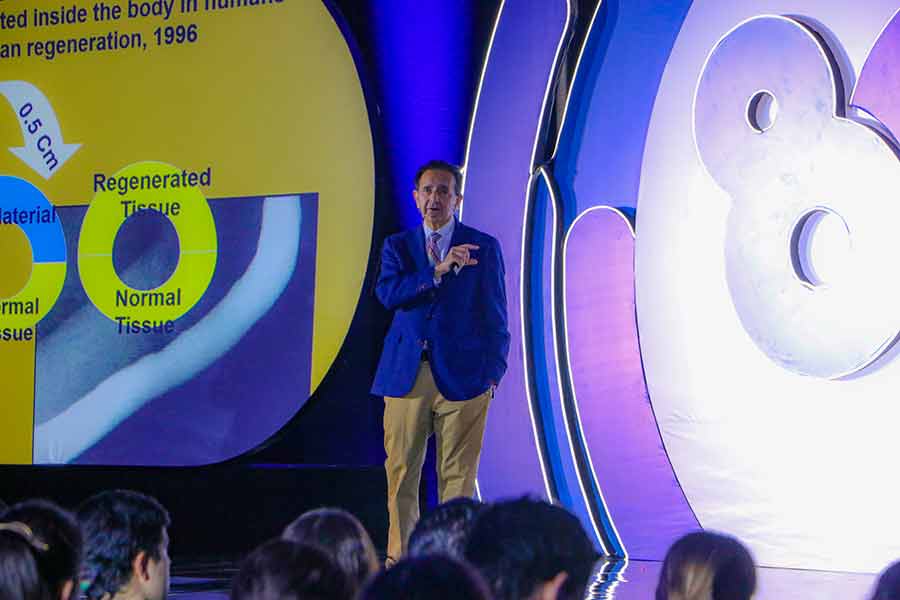
Finally, the researcher from the Wake Forest Institute for Regenerative Medicine emphasized that the work carried out at his institute is for the welfare of mankind:
“These technological advances, made possible by years of study and testing, have a significant effect on the lives of patients in need of targeted treatments. Let’s continue our efforts to improve the lives of more people.”
Dr. Anthony’s talk was held at the Conference Center on the Guadalajara campus as part of the “Inspire to Transform” series, which includes renowned national and international leaders.
These encounters represent the opportunity that, as an institution and society, we have to prepare ourselves for and tackle the challenges that the future demands such as a sustainable world, the transformation of cities and communities, leadership, and research.
“Regenerative medicine has the potential to completely disrupt the medical field.”- Anthony Atala
Mario Adrián Flores Castro, Vice President of the Tec’s Monterrey Region said, “At Tec de Monterrey we understand and take responsibility for the impact we have on the lives of young people, their families, and the community around them.
“So, this anniversary year we celebrate 80 years of building legacies that transcend, hand in hand with our community,” he said.
Claudia Felix, Vice President of the Tec’s Western Region, mentioned that the invitation is “to have a greater and better impact on the lives of people and communities.”
ALSO READ:

